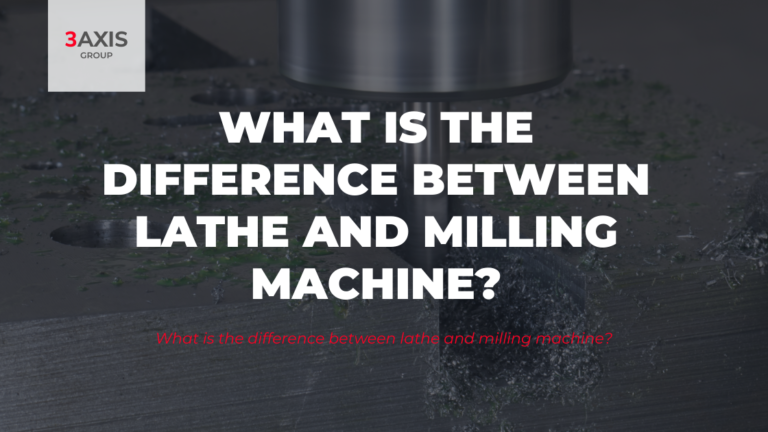Although lathes and milling machines follow the same machining principle, extracting material from a block and shaping it to produce the specified part, there are many features that differentiate them. That is why most modern manufacturing facilities are equipped with milling machines and lathes.
Keep reading to discover the differences between lathes and milling machines!
In today’s post we help you to better understand the main features of these two popular industrial machines. Because a deeper understanding of the differences between lathes and milling machines will help you maximize its capabilities.
Difference between lathe and milling machine
As we mentioned at the beginning, the principle of machining is the same but not its operational method. Consequently, the main difference between lathe and milling machine is the relationship between the workpiece and the tool.
In a lathe, the workpiece that is being machined spins about its axis, while the cutting tool does not. Remember, when looking to create quick, repeatable, and symmetrical cylindrical parts, the lathe machine is the best choice.
However,the tool in a milling machine rotates about its axis, while the workpiece does not. This allows the tool to approach the workpiece in many different orientations that more intricate and complex parts demand.
This is explained by the fact that the milling machine generally works on three axes X, Y and Z and the lathe generally only on two, X and Z. Although the milling machine can even work with 4 or 5 axes.
We could also consider the cutting tool as a difference. The cutting tool used in milling machines usually has several blades or points. In comparison, the cutting tool used in lathes usually has a single blade. With multiple blades or points, milling machines are able to grind away material from the workpiece.
In short, both lathes and milling machines have their own unique functions and purpose. So, what’s the main features of these two machines exactly?
What Is a Lathe?
A lathe is a large machine designed to rotate a workpiece against a single-bladed cutting tool. After the workpiece has mounted on top of the lathe, the lathe turns it against a single-bladed cutting tool. The cutting tool itself remains stationary, but the workpiece rotates against it to remove material.
In addition, there are many types of lathes that are specialized for different materials and techniques. And it is mainly used in the metallurgical industry or in the wood industry.
What Is a Milling Machine?
A milling machine, as mentioned above, is a machine used to remove material from a workpiece by feeding the workpiece against a multi-bladed or -pointed cutting tool. The milling machine is one of the most versatile machines in the shop. Usually, they are used to mill flat surfaces, but they can also be used to machine irregular surfaces.
Additionally, the milling machine can be used to drill, bore, cut gears, and produce slots into a workpiece.
To sum up, there are different milling machines with specific functions, sizes and characteristics. They can be classified by different criteria, the most commonly used are:
- By the spindle orientation
- Vertical
- Horizontal
- Universal
- Depending on the number of axes
- 3 Axis
- 4 Axis
- 5 Axis
In our Marketplace you can discover a wide variety of CNC milling machines and lathes. If you are looking for versatility for your next project a milling machine is the best options but don’t forget that a lathe is superior for cylindrical parts.
If you need advice, we will be happy to help you, you can write us through the web chat or sending us an email to offers@3axis-group.com.




